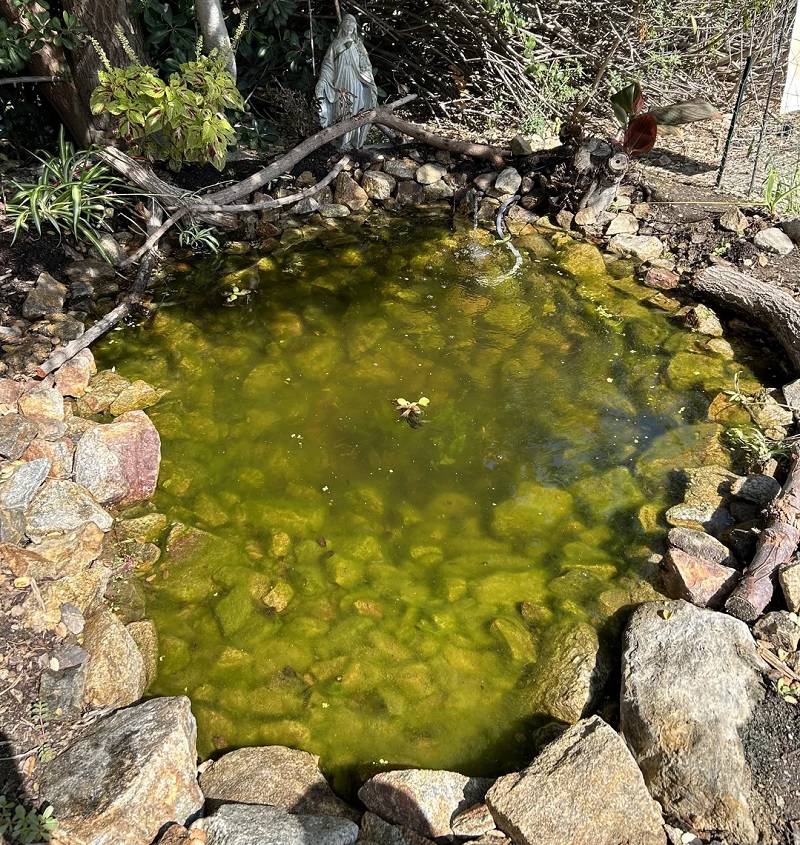A backyard pond is a beautiful way to attract local wildlife, support biodiversity, support native plant growth, and reconnect with nature.
However, one of the most problematic parts of ponds is their vulnerability to algae blooms, which produce toxins that can lead to health issues for people and wildlife. When algae thrive and grow excessively, it creates conditions where fish can't live, impacting the entire ecosystem and food chain.

One gardener faced this situation with a small 7-by-6-by-2-foot pond, prompting them to ask followers of the subreddit r/ponds for advice.
'No matter what I try, I'm removing heaps of it daily, only for it to come back the next day," the gardener wrote, along with a photo of the pond filled with green algae.
The original poster described how local temperatures have reached 109 degrees Fahrenheit recently and how the algae prevents plants from growing. Although a pump is running for some water movement at the back, the OP neglected to add a running water feature to the pond. Meanwhile, many dead insects are floating in the pond, likely contributing to higher nitrogen levels.
"I don't want to jump to algae remover just yet as I'm apprehensive to use chemicals, but any advice would be greatly appreciated!" the original poster wrote.
Algae blooms are on the rise due to our planet's overheating. Rising temperatures lead to severe storms that stimulate the phosphorus algae need to grow, and rising carbon dioxide pollution levels make algae grow even more.
Beyond just small ponds, toxic algae can take over lakes and result in beach shutdowns, resident evacuations, and governor-declared states of emergency.
Fortunately, there are chemical-free ways to control algae growth, such as pond dye that filters sunlight through water and is safe for fish. Keeping pond water constantly moving is also a great way to make it harder for algae to grow without adding toxic chemicals.
Redditors weighed in with other helpful advice to address the original poster's concerns.
One Reddit user asked, "Can you get some tall marginal plants to put around the edges to at least help give it some shade?"
"Introducing UV into the filtration (if there is any) should have a big impact," suggested a Redditor.
Another Redditor wrote, "Aeration stones help, barley straw extract, plants, beneficial bacteria, and a filter."
Join our free newsletter for easy tips to save more and waste less, and don't miss this cool list of easy ways to help yourself while helping the planet.









